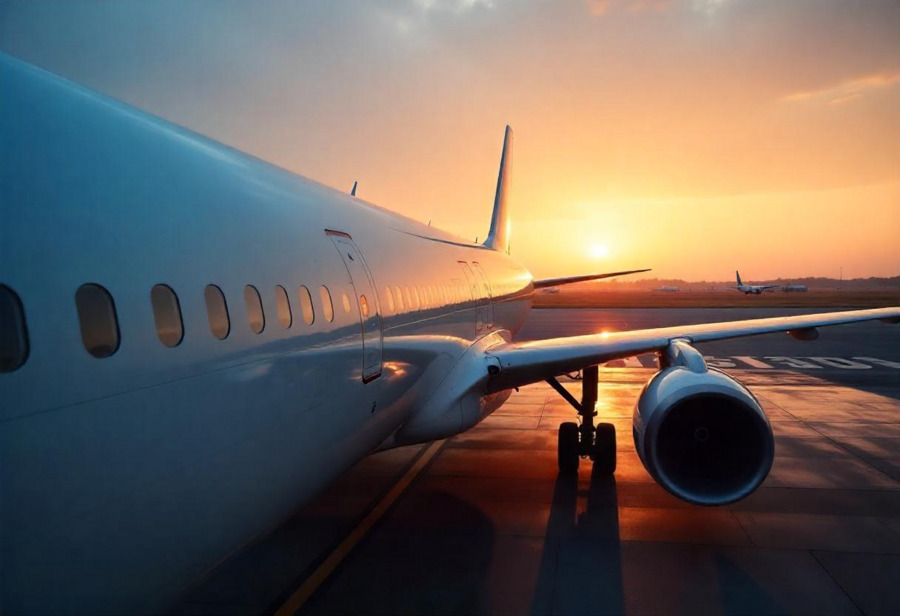<> Viral of Today <>
Home » AIRLINE NEWS » US, Japan, France Carriers Boost Flights, Codeshares, And Fleet Deployments To India As The Country Becomes A Global Hotspot For Airline Growth Thursday, June 5, 2025US, Japan, and France carriers are ramping up flights, expanding codeshare agreements, and increasing aircraft deployments to India because the country has rapidly emerged as one of the most promising growth markets in global aviation, driven by its booming middle class, surging international travel demand, and large-scale aircraft and infrastructure investments that are reshaping its role on the world air traffic map.India is fast becoming the centerpiece of international aviation growth, as foreign airlines turn their focus toward the world’s most populous country to counter declining traffic across the Atlantic. While economic headwinds and inflation are dampening demand in key Western markets, India is emerging as a rare bright spot—drawing a wave of new routes, expanded codeshares, and record aircraft orders.During a major global aviation event held in New Delhi, both international and Indian airlines unveiled an array of announcements signaling a strong pivot toward India. A major U.S. carrier confirmed the launch of nonstop service between a key American city and New Delhi. Alongside that, the airline finalized a new codeshare agreement with India’s top low-cost operator, strengthening transcontinental connectivity and enabling seamless connections for passengers flying between cities in the U.S. and destinations across India.This new partnership joins a broader network of airline alliances already tapping into India’s fast-growing air travel market. European and Asian carriers are also extending their links into Indian cities, building on rising demand for both leisure and business travel. Some of these expansions include new interline arrangements, increased codeshare flights, and route frequencies being upgraded from seasonal to year-round service.India’s aviation landscape is undergoing a powerful shift, fueled by the country’s expanding middle class, fast-paced urban growth, and significant upgrades to transport infrastructure. Home to over 1.4 billion people, India has climbed to become the world’s third-largest domestic air travel market. This massive population base, paired with increasing interest in overseas travel, is driving a steep surge in outbound flight demand.In response to soaring demand, India’s flagship full-service airline, now privately operated, has launched an ambitious fleet renewal plan. Since 2023, the carrier has signed agreements to acquire 570 new aircraft from both Airbus and Boeing. This large-scale order reflects a broader vision to modernize its fleet and re-establish a strong international presence. The purchase includes a mix of narrowbody jets tailored for domestic routes and widebody aircraft designed to handle long-haul global operations.India’s leading budget airline is also expanding aggressively. The carrier holds an order book of more than 900 aircraft, making it one of the largest pending fleets in the world. In a significant move, the airline recently expanded its order to include 60 long-range widebody aircraft, signaling an intent to break into long-haul international markets traditionally dominated by legacy flag carriers.While domestic air traffic in India continues to rebound sharply after the pandemic, international travel is now surging ahead as well. Airports across major Indian cities are recording record numbers of arrivals and departures. Several terminals are undergoing expansion or modernization to handle the growing volume, including plans for new runways, increased terminal capacity, and enhanced passenger experience.However, not all growth comes without risk. With more airlines competing for a share of India’s booming market, industry analysts are voicing concerns about a potential race to the bottom. Aggressive pricing strategies, excess capacity, and competition for limited airport slots could place financial pressure on carriers—particularly those already operating on thin margins.Despite those concerns, India’s top low-cost airline is emerging as a powerful hub partner for many foreign carriers. During the industry event in New Delhi, several international airlines confirmed plans to deepen their cooperation with the Indian carrier through expanded codeshare agreements. These arrangements allow foreign travelers to access dozens of Indian destinations on a single booking, significantly enhancing convenience and connectivity.The Indian airline has already established links with some of the most prominent carriers in the world. Its growing list of partners includes airlines from Australia, Japan, the United Kingdom, and the Middle East. These collaborations offer strategic advantages for all parties, allowing for cost-sharing, improved fleet utilization, and access to wider passenger bases.Still, one major hurdle continues to hold back the full potential of India’s aviation partnerships—its restrictive bilateral agreements. Under current rules, foreign airlines can only operate a limited number of flights to Indian cities, with reciprocal limits placed on Indian carriers flying abroad. These rules, originally designed to protect national carriers, now risk stifling growth in a liberalized global market.Several international airlines have publicly voiced frustration over these restrictions. They argue that the caps on seat allocations are out of sync with the current pace of demand and are preventing airlines from offering additional flights that passengers clearly want. This bottleneck has also limited the ability of carriers to introduce new destinations or increase frequencies on profitable routes.Calls are growing for Indian authorities to revisit and revise these outdated policies. Modernizing air service agreements would not only benefit foreign airlines but also support India’s own carriers by opening the door to more reciprocal traffic rights. It would also strengthen India’s vision of positioning itself as a global aviation hub bridging East and West.As more aircraft are delivered, airport capacity expands, and international collaborations deepen, India is now on a trajectory to become one of the most important aviation markets in the world. The country’s unique combination of population scale, economic momentum, and rising travel aspirations offers an unmatched opportunity for airlines navigating a global environment marked by uncertainty and shifting travel patterns.US, Japan, and France carriers are rapidly expanding flights, codeshares, and fleet operations to India as the country’s rising middle class, international travel demand, and massive aviation investments position it as a global hub for airline growth.In a world where many carriers are scaling back due to inflation and geopolitical instability, India offers clarity, direction, and—most importantly—demand. The future of global aviation is increasingly flying through Indian skies.
This information will surprise you!
See also
- Read until the end to discover everything.
- Important information you need to know.
- Interesting facts and helpful tips.
Conclusion
Did you enjoy the news? Keep following us daily!

